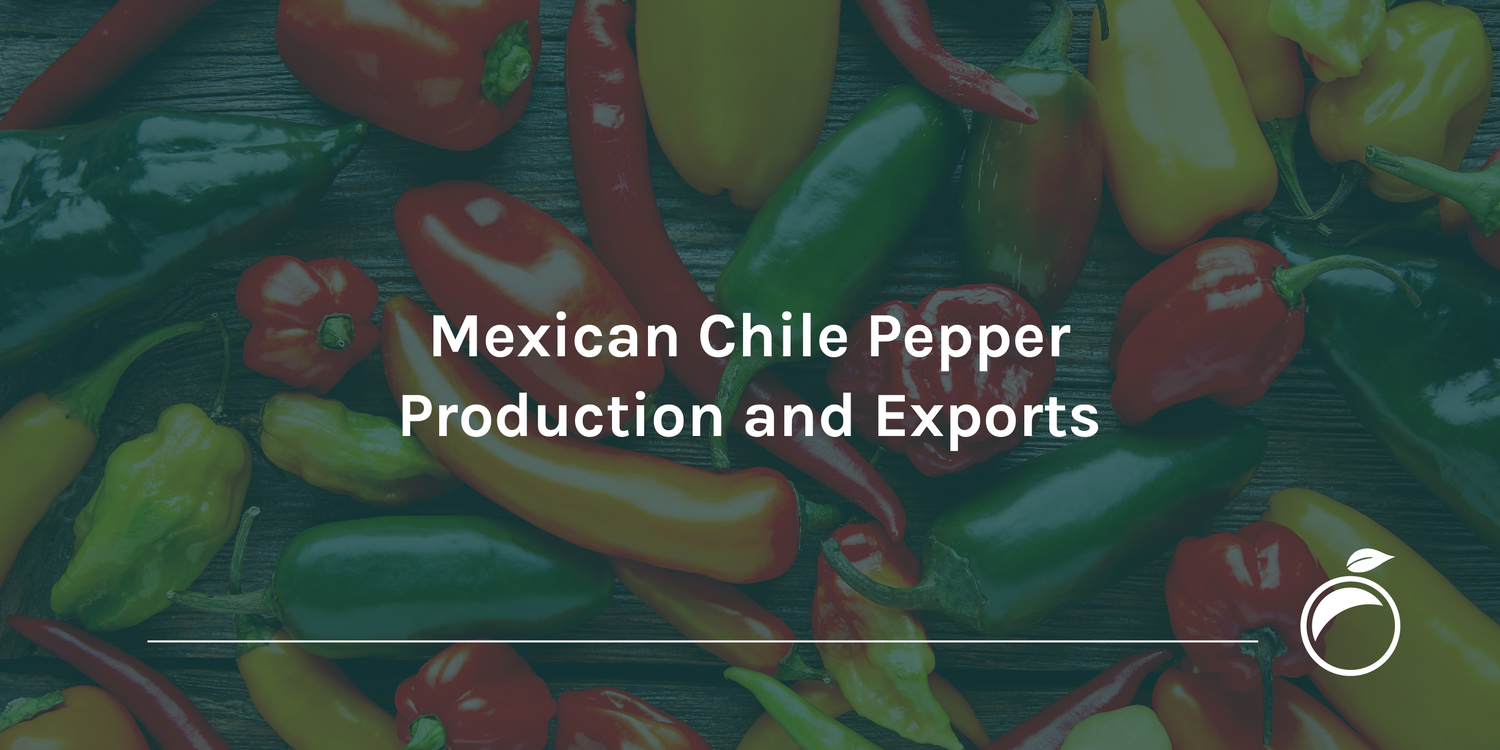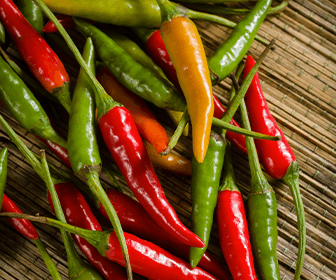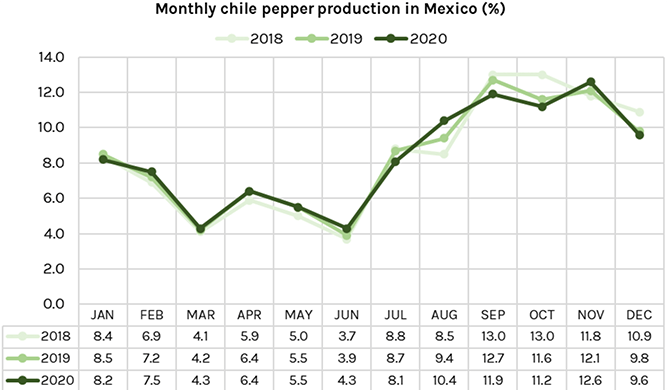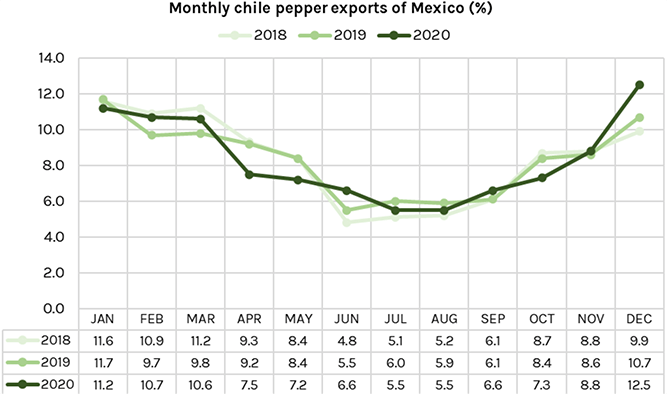
Mexican Chile Pepper Production and Exports
World chile pepper production presented an average annual variation of +2.0% during 2011-2020, although in 2020 it had an increase of 0.3% with respect to 2019, according to FAOSTAT, going from 36,026,386 to 36,136,996 tonnes, with Mexico being the 2nd largest producer and the largest exporter with 2,818,443 and 1,138,288 tonnes, respectively.
Production
Chile pepper production in Mexico has presented an average annual variation of +4.2% during 2011-2020, having the most important variation in 2014 (+25.8%) and the maximum production in 2018 with 2,850,427 tonnes. In 2019 there was a decrease of 4.7% compared to the previous year, but in 2020 an increase of 3.7%.

In Mexico, the main chile pepper producing states are Chihuahua and Sonora with 675,131 and 648,222 tonnes in 2020, followed by Zacatecas with 228,933 tonnes, states that together produce 55.1% of the national total, while Fresnillo in Zacatecas is the main producing municipality with 173,606 tonnes.
Production in Mexico is distributed throughout the year, with the highest volumes during the months of September, October and November and the lowest volumes in March and June.
The production peak is quite marked, having a decrease during spring, but an increase during the summer until reaching production peaks in the fall, between the months of September and November, and decreasing again throughout the winter and spring.
In Mexico, 82.2% of chile production is obtained in the open air, while 10.0% is in shade netting and 7.8% in greenhouses. Likewise, the value of open-air production is higher, with 26,145 million pesos over 7,867 million pesos for protected agriculture It is worth mentioning that greenhouse yields are higher, 105.16 tonnes per hectare, compared to 18 tonnes per hectare in open fields.
On the other hand, as for the type of production, more than 99.9% is conventional, leaving practically nothing for organic production, so there is great opportunity for growers who want to work under an organic production system.

Exports
In the last 10 years, chile pepper exports in Mexico have remained in constant growth, having in 2020 an export volume of 1,160,581 tonnes for a value of 1,007 million dollars, which represented an increase of 1.8% in volume and 11.4% in value with respect to 2019.
The main customer of Mexican chile pepper is the United States, a country where about 99% of the total volume exported is destined and to which 490,681 tonnes were shipped in 2021, which represented an increase of 13.4% over the 432,833 tonnes in 2020.
Additionally, Mexico is also the leading chile supplier to the United States, over the Dominican Republic and Canada. However, Mexico also ships some volume to other countries such as Canada, Spain, Guatemala, and the United Kingdom.
The peak export season runs from December through March, with the highest volumes in December and January, complementing production in the United States, which is mostly in New Mexico and California during the months of July through December.

Conclusion
Being a product of utmost importance for the country, chile pepper production in Mexico has seen considerable growth over the last decade, making it the 2nd largest producer and the main exporter worldwide, with the United States as its main export destination, with about 99% of the total volume exported.
In addition, as the undisputed leader in exports, Mexico has ample room to continue growing and exploring new alternatives such as organic production or expanding to other destinations.
FAO-FAOSTAT. Crops and livestock products – chillies and peppers, green
SADER-SIAP. Datos abiertos de producción agrícola – chile
SADER-SIAP. Panorama Agroalimentario – chile verde
USDA-NASS. Vegetables 2021 Summary – Chile Pepper
USDA-ERS. Vegetables and Pulses Data – Data by Commodity – Peppers, chile
